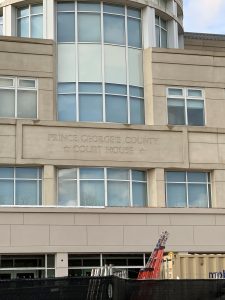Last month, Maryland’s Court of Appeals upheld a $7 million verdict to the plaintiff in an asbestos case even though there was no direct evidence that the defendants had installed the asbestos products at issue. In Wallace & Gale Asbestos Settlement Trust v. Busch, a 6-1 majority held that direct evidence of exposure to a specific defendant’s asbestos products is unnecessary. Rather, a defendant’s liability for asbestos exposure can be based on circumstantial evidence and reasonable inferences.
Facts of the Case
 The underlying facts are fairly typical of most asbestos cases these days. The plaintiff (70-years-old at the time of trial) worked for 30 years as an HVAC technician. He primarily installed thermostats, sensors, and temperature control systems. The plaintiff himself never directly worked with asbestos, but he was sometimes around other people who were using asbestos.
The underlying facts are fairly typical of most asbestos cases these days. The plaintiff (70-years-old at the time of trial) worked for 30 years as an HVAC technician. He primarily installed thermostats, sensors, and temperature control systems. The plaintiff himself never directly worked with asbestos, but he was sometimes around other people who were using asbestos.
The worksite at issue was the construction of Loch Raven High School (LRHS) in 1971-72. The plaintiff worked in the boiler room of LRHS for several months during its construction. Workers installing the boilers used asbestos products to insulate the 2 massive boilers. As a result, the plaintiff and everyone else in the boiler room during that time were exposed to a “snowstorm” of asbestos dust.
Years later, the plaintiff was diagnosed with mesothelioma and he sued the defendant. The case eventually went to trial in the Circuit Court for Baltimore City. The critical issue in the case was whether the boilers at LRHS were installed by the defendant, or by some other contractor. The plaintiff himself could not recall if the individuals installing the boilers were employees of the defendant. Moreover, the plaintiff could never present any direct evidence linking the defendant to the installation of the boilers at LRHS.
What the plaintiff could prove, however, is that the defendant was the primary (and possibly the only) HVAC contractor working on the LRHS construction project. At trial, the plaintiff produced a wealth of documents establishing the defendant’s extensive work at the LRHS site. These documents included: billing statements showing that the defendant had insulated “plumbing and heating surfaces” at LRHS; partial payment for work performed at LRHS; and timesheets showing that the defendant’s employees logged over 4,500 hours at the LRHS construction site. However, there were no documents (or other proof) that conclusively showed that the defendant’s work at LRHS included the boiler installation.
After the trial, the jury concluded that the defendant was responsible for the boiler installation at LRHS. They awarded the plaintiff and his wife $14.5 million in total damages. That verdict was later reduced by the court to $7.3 million.
Issues on Appeal
The defendant appealed the verdict and initially lost in the Court of Special Appeals before the Court of Appeals granted cert. The argument on appeal was that the plaintiff failed to present direct evidence linking the defendant to asbestos installation in the boiler room or to the use of asbestos products anywhere at the LRHS site. At most, the evidence only established that the defendant was a major contractor on the project. The defendant argued it could not be held liable without such direct evidence linking it to asbestos at LRHS. According to the defendant, the jury’s verdict was based on speculation and not supported by proper evidence.
The court began its analysis with an overview of Maryland law on asbestos liability. In Maryland, asbestos plaintiffs must prove exposure to a specific defendant’s asbestos-containing products to establish liability. The court also explained that in asbestos cases, exposure and liability as to a specific defendant can be based on “circumstantial evidence” from which the jury can draw reasonable conclusions.
In the court’s view, the plaintiff presented more than enough circumstantial evidence to suggest that the defendant was only HVAC contractor involved the in LRHS construction project in 1971-72. Based on this evidence, the court held it was reasonable for the jury to infer that the defendant was the contractor responsible for insulating the boilers at LRHS.
Based on this holding, the court rejected the defendant’s arguments on appeal and affirmed the $7.3 million verdict in favor of the plaintiff and his wife.
Notes and Comments
This decision is a significant win for future asbestos plaintiffs. A loss in this case would have been equally devastating. One of the unique aspects of asbestos cases is the enormous time gap that often exists between the plaintiff’s exposure and their development of cancer. When the relevant facts occurred 30 or 40 years ago, it can be extremely difficult to establish definitive proof.
These circumstances were a perfect example of the fact development challenges asbestos plaintiffs and their lawyers face. These plaintiffs’ lawyers were trying to establish exactly what occurred in a 4-month window of time nearly 50 years back. It is impressive that the plaintiff’s lawyers could document as many facts as they did regarding the contractors who built Loch Raven High School. That takes some hustle.
The Court’s ruling makes practical sense in these cases. Requiring plaintiffs to present documented proof of every single detail from decades back would be an unreasonably high burden. If a plaintiff can present enough circumstantial evidence, juries should be allowed to make reasonable assumptions about what happened years back.
 Maryland Injury Law Center
Maryland Injury Law Center


